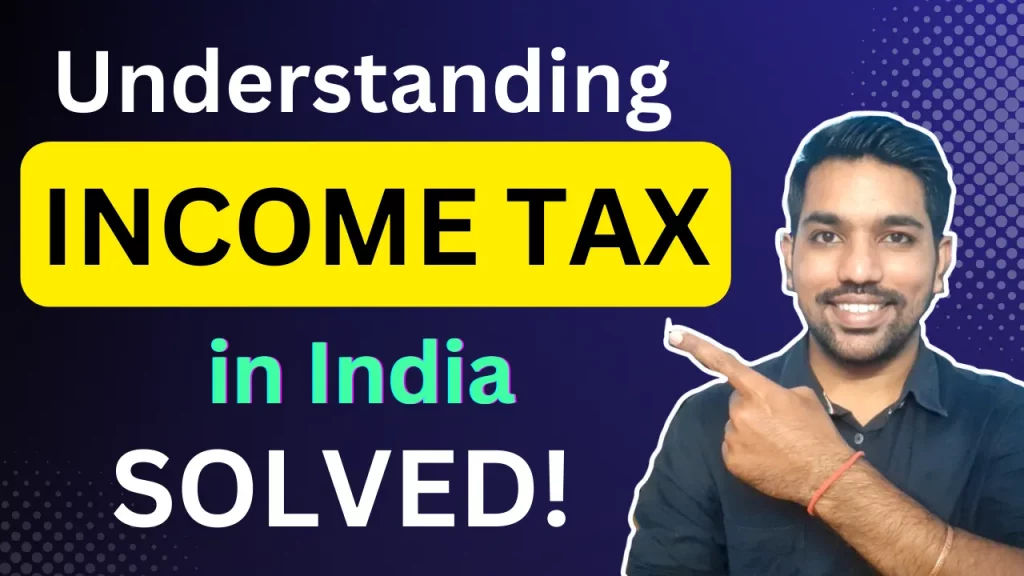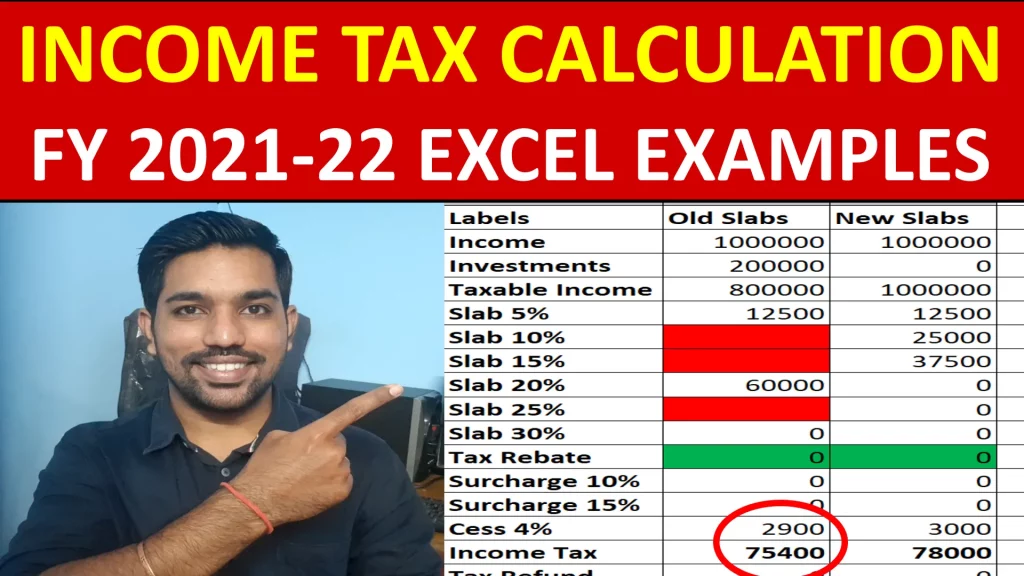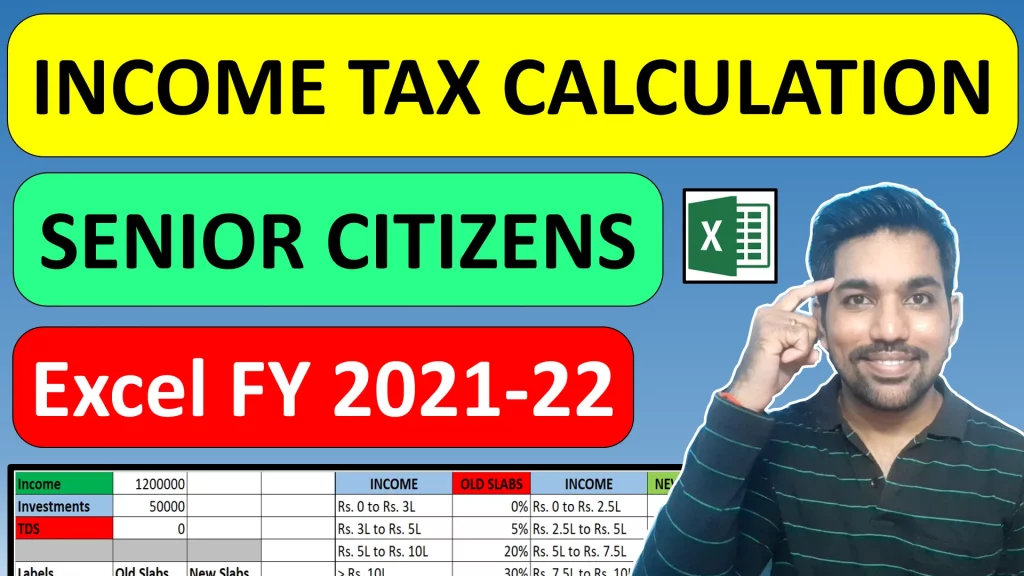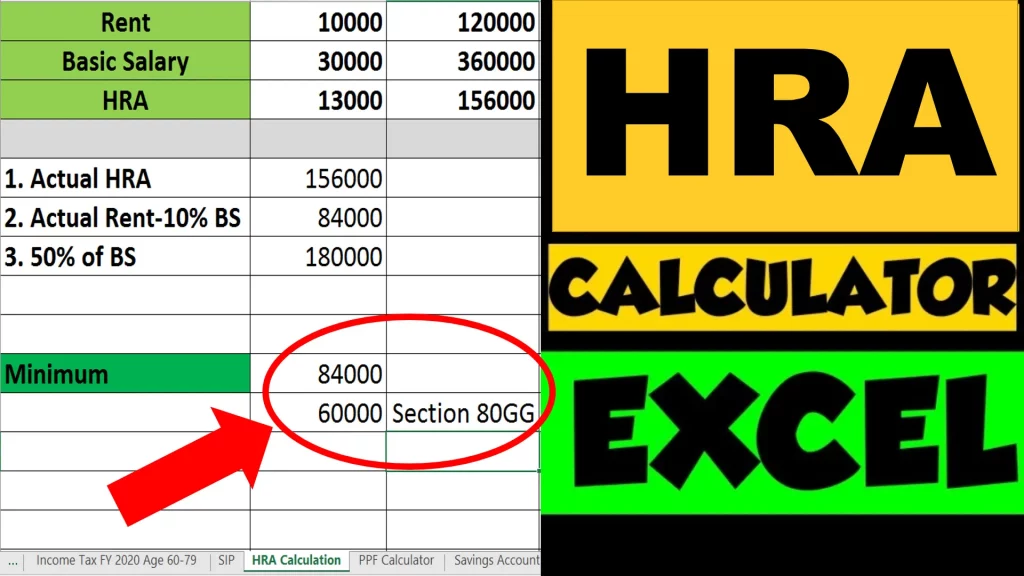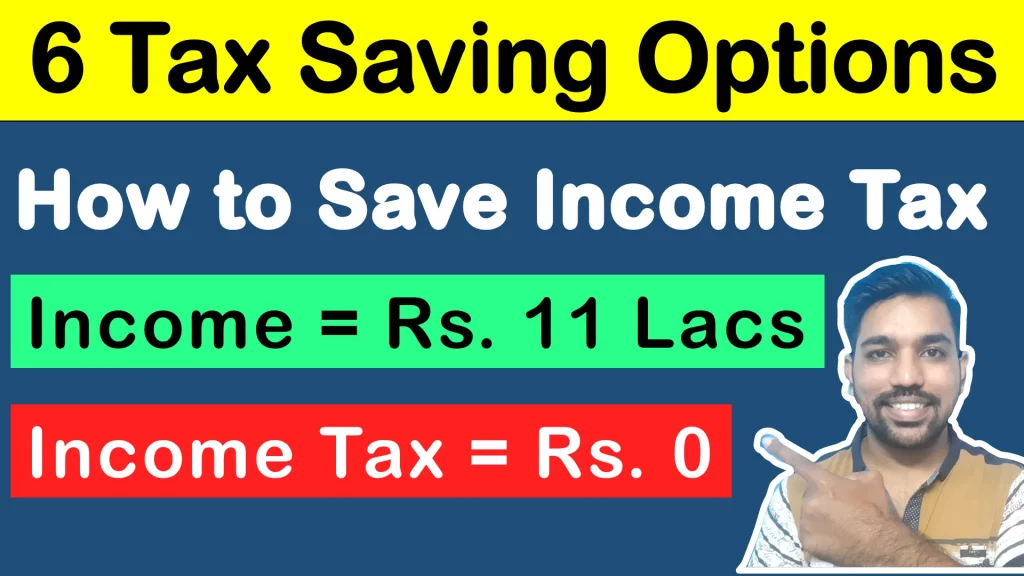It is very important to understand Basics of Income Tax in India for Beginners who have just started working in a company or organization, and will be paying income tax in India in upcoming years. There are multiple factors to consider while you earn income, pay income tax to government of India and make use of various investments to grow your wealth.
Income Tax is the amount you need to pay to the government of India, that can utilize your funds for the development of country including infrastructure, hospitals, roads, railways, etc. This indirectly helps you to live in a modern country with all required facilities. While you pay income tax, this amount depends on the total income you earn including salary / business, capital gains from stocks or mutual funds, any side income, etc. Income tax is calculated on taxable income, which means not entire income you earn will be subjected for income tax calculation, but you get certain deductions and exemptions as well.
Let us understand the Basics of Income Tax in India in more detail.
What is Income Tax?
- Income Tax is the amount you need to pay to the government of India when you earn Income
- The amount of income tax to be paid depends on your total income, deductions or exemptions claimed and taxable income (explained below)
- For salaried employees, this income tax is deducted at source (TDS) while their salary is credited to bank account
- For businesses, the individual need to file Income Tax return to check the actual income tax to be paid
- Salaried employees can also file Income Tax Return (ITR) to get refund in case extra income tax is deducted from their salary
- Income considered between April to march months will be treated as total income, on which the individual has to pay income tax. This April to March month cycle is known as financial year
- Also, Indians get various investment options to save income tax while claiming deductions under various sections
Why you need to pay Income Tax in India
You need to pay Income Tax in India in order to provide your contribution towards the development of the country. It helps the government of India to allocate funds for building infrastructure, roads, railways, defense and many other sectors that helps the country to grow as a nation.
You income tax money will be used to build new hospitals and maintain existing ones to provide treatments for everyone without any costs.
Love Reading Books? Here are some of the Best Books you can Read: (WITH LINKS)
Understanding Basics of Income Tax in India:
Let us now understand important terms about Income Tax in India
Financial Year
Financial Year or FY is the months between April to March, during which, whatever income you earn need to be considered for income tax payment. For example, currently the Financial year between April 2024 to March 2025 will be considered for your income tax calculation.
Hence we say this is FY 2024-25, during income tax calculation process.
Assessment Year
Assessment year is the year after the financial year. As mentioned above, when we consider FY 2024-25 – which means income between April 2024-25 will be considered for income tax calculation. The tax payment or refund will be done by 31st July 2025, after the end of financial year.
Usually you get the time period after March 2025 – which is between April 2025 to July 2025, to visit the income tax portal and file income tax return – either to pay pending income tax or get refund on the extra tax you have paid.
Since this process occurs after end of financial year – between April 2025 to July 2025, it is called Assessment Year 2025-26 (AY 2025-26).
And this is the difference between financial year and assessment year. So we are currently in FY 2024-25 and will pay tax in AY 2025-26.
Gross Income or Total Salary
Gross Income is simply the total income you earn in the entire financial year. This includes all the component in your salary slip, even including deductions such as provident fund, transportation costs, income tax paid, professional tax, food and insurance, etc.
You can find out your monthly gross income in your payslip. Sometimes, insurance, food and other allowance are not included in monthly payslip so you can consider the CTC (Cost to company) as your gross income.
You don’t have to calculate gross income manually. At the end of financial year, your company will provide you Form 16 that will contain all details about income and deductions for you in specific financial year.
Deductions
Deductions or exemptions help you to subtract some amount from your gross income or total income, which will not contribute in your income tax calculation.
You can claim various deductions as below:
Section 80C – This includes various investment options such as Employee Provident fund (EPF), Public Provident Fund (PPF), Life Insurance premiums, 5 year fixed deposits, Equity linked saving scheme (ELSS), etc.
Section 80CCD(1B) – This includes National Pension System (NPS) in which you can invest and claim deduction
Section 80D – This includes medical insurance premiums that you pay for self, spouse and parents.
Above are some of the sections you can use to save Income Tax. You check more deduction options here.
Taxable Income
Taxable income is the income on which you will actually pay income tax based on the tax calculation.
You find your taxable income based on below formula:
Taxable Income = Total Income (Gross Income) - DeductionsSo basically, whatever deductions you claim or investments you make, need to be subtracted from gross income to reach taxable income. And this taxable income is considered for your income tax calculation.
So you get the opportunity to save income tax by using various investment options.
Please note that you get maximum deductions to be claimed with old tax regime, The other regime that is new tax regime, does not allow most of the deductions to be claimed due to its lower tax slab rates. Will discuss this in below sections.
Income Tax Slab Rates
Now based on your taxable income, you will belong to one of the tax slab rates in India. Below are the tax slab rates for people of age below 60 years for FY 2024-25 with old tax regime and new tax regime:
| Income | Old Tax Regime Slab Rates |
|---|---|
| Rs. 0 – Rs. 2.5 Lakh | 0% |
| Rs. 2.5 Lakh – Rs. 5 Lakh | 5% |
| Rs. 5 Lakh – Rs, 10 Lakh | 20% |
| More than Rs. 10 Lakh | 30% |
| Income | New Tax Regime Slab Rates |
|---|---|
| Rs. 0 – Rs. 3 Lakh | 0% |
| Rs. 3 Lakh – Rs. 7 Lakh | 5% |
| Rs. 7 Lakh – Rs. 10 Lakh | 10% |
| Rs. 10 Lakh – Rs. 12 Lakh | 15% |
| Rs. 12 Lakh – Rs. 15 Lakh | 20% |
| More than Rs. 15 Lakh | 30% |
So based on your income, you will belong to specific tax slab rate.
Note that if you belong to 10% bracket in new tax regime with 10 lakh income, that does not mean you pay 10% tax on entire 10 lakh income.
You pay 0% tax between 0 to 3 lakh income, than 5% tax on 4 lakh (3 to 7 lakh income) and than 10% tax on 3 lakh (7 to 10 lakh income). And this is how income tax is calculated with old and new tax regimes, after considering all slab rates.
Standard Deduction
Standard deduction is a flat deduction you get if you are salaried employee or pensioner. This flat deduction is Rs. 50,000 in old tax regime and Rs. 75,000 in new tax regime for FY 2024-25.
This standard deduction need to be directly subtracted from your gross income before calculating income tax with both regimes.
Tax Rebate 87A
Tax Rebate under Section 87A is the rebate that is provided to you if your taxable income is below Rs. 5 lakh with old tax regime, or below Rs. 7 lakh with new tax regime.
Government provides you this relief if you need to pay low income tax.
So for example, if your income is Rs. 5 lakh with old tax regime, below are the calculations:
| Income Slab | Calculated Tax |
|---|---|
| Rs. 0 to Rs. 2.5 Lakh | Rs. 0 (0%) |
| Rs. 2.5 Lakh to Rs. 5 Lakh | Rs. 12,500 (5% on Rs. 2.5 Lakh difference) |
| Total Tax before cess 4% | Rs. 12,500 |
As seen above, Rs. 12,500 is the tax before cess of 4% is applied on it. Now this tax is small amount as per government, hence they provide you relief under tax rebate 87A which has maximum limit of Rs. 12,500. So you don’t pay any tax on this income or below 5 lakh income
But in case your income is above Rs. 5 lakh, you have to pay this Rs. 12,500 as tax and you won’t get rebate under 87A.
Read more about examples of Tax Rebate under Section 87A.
Income Tax Calculation Example – Rs. 8 Lakh
Income tax is calculated based on 2 tax regimes – Old Tax Regime and New Tax Regime. You have the option to choose between both regimes while paying income tax.
With Rs. 8 Lakh of income after deductions of Employee Provident fund, standard deduction and other applicable deductions, below is the tax calculation with old and new tax regime:
Old Tax Regime
| Income Slabs | Tax Bracket | Income Tax |
|---|---|---|
| Rs. 0 – Rs. 2.5 Lakh | 0% | Rs. 0 |
| Rs. 2.5 Lakh – Rs. 5 Lakh | 5% | Rs. 12,500 |
| Rs. 5 Lakh – Rs. 8 Lakh | 20% | Rs. 60,000 |
| Cess | 4% | Rs. 2,900 |
| Total Income Tax | Rs, 75,400 |
New Tax Regime
Let us now see the tax calculation with new tax regime:
| Income Slabs | Tax Bracket | Income Tax |
|---|---|---|
| Rs. 0 – Rs. 3 Lakh | 0% | Rs. 0 |
| Rs. 3 Lakh – Rs. 6 Lakh | 5% | Rs. 15,000 |
| Rs. 6 Lakh – Rs. 8 Lakh | 10% | Rs. 20,000 |
| Cess | 4% | Rs. 1,400 |
| Total Income Tax | Rs. 36,400 |
So as seen above, you pay less income tax of Rs. 36,400 with new tax regime compared to old tax regime. But you can claim more deductions with old tax regime to save more income tax as per your investments.
TDS or Tax Deducted at Source
Based on the income tax calculated on your projected salary in financial year, Tax deduction at source or TDS will be deducted from your monthly salary before it gets credited to your bank account.
This deduction of income tax is done on monthly basis, based on your projected income in financial year and investments you are going make in that financial year.
Income Tax Returns (ITR) Filing
In case extra income tax is deducted from your yearly salary, you can file ITR (Income Tax return) on official income tax portal. Based on the old regime or new regime you select, required income tax will have to be paid for that financial year by you.
So these are some of the important factors you should know as Basics of Income Tax in India for Beginners.
Watch below video on Income Tax Calculation Examples:
Income Tax Calculation FY 2025-26 Video
Watch more Videos on YouTube Channel
Save Home Loan Interest Amount!
Use Home Loan Excel Calculator that will help you to Save Interest Amount on Home Loan EMI.
Click below button to download Home Loan EMI and Prepayment Calculator in Excel:
Watch how Home Loan Calculator in Excel Works
Income Tax Calculator App – FinCalC
For Income Tax Calculation on your mobile device, you can Download my Android App “FinCalC” which I have developed for you to make your income tax calculation easy.
What you can do with this mobile App?
- Calculate Income Tax for FY 2025-26 and previous FY 2024-25
- Enter estimated Investments to check income tax with Old and New Tax Regime
- Save income tax details and track regularly
- Know how much to invest more to save income tax
- More calculators including PPF, SIP returns, Savings account interest and lot more
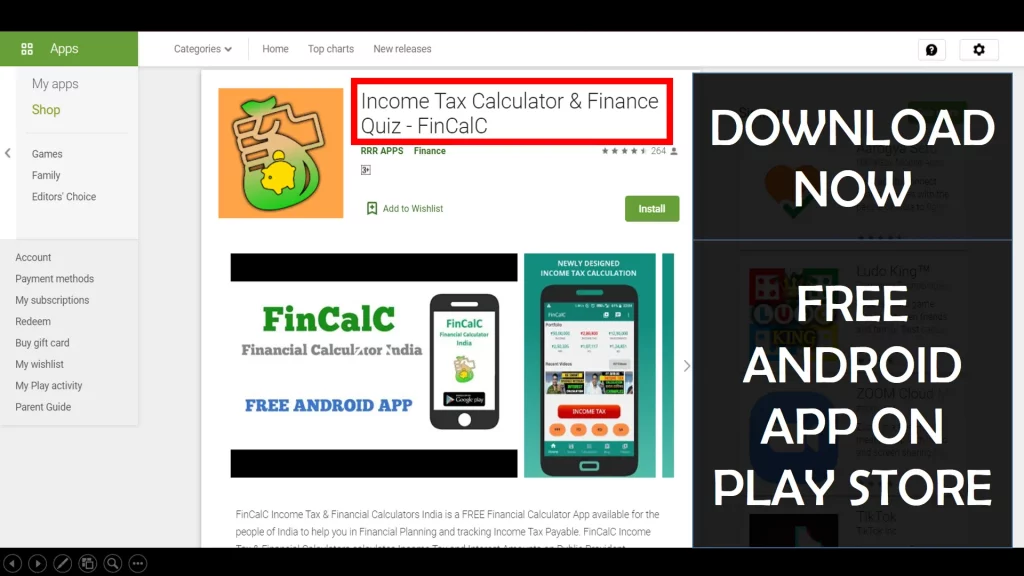
Use Popular Calculators:
- Income Tax Calculator
- Home Loan EMI Calculator
- SIP Calculator
- PPF Calculator
- HRA Calculator
- Step up SIP Calculator
- Savings Account Interest Calculator
- Lump sum Calculator
- FD Calculator
- RD Calculator
- Car Loan EMI Calculator
- Bike Loan EMI Calculator
- Sukanya Samriddhi Calculator
- Provident Fund Calculator
- Senior Citizen Savings Calculator
- NSC Calculator
- Monthly Income Scheme Calculator
- Mahila Samman Savings Calculator
- Systematic Withdrawal Calculator
- CAGR Calculator
I’d love to hear from you if you have any queries about Personal Finance and Money Management.
JOIN Telegram Group and stay updated with latest Personal Finance News and Topics.
Download our Free Android App – FinCalC to Calculate Income Tax and Interest on various small Saving Schemes in India including PPF, NSC, SIP and lot more.
Follow the Blog and Subscribe to YouTube Channel to stay updated about Personal Finance and Money Management topics.

